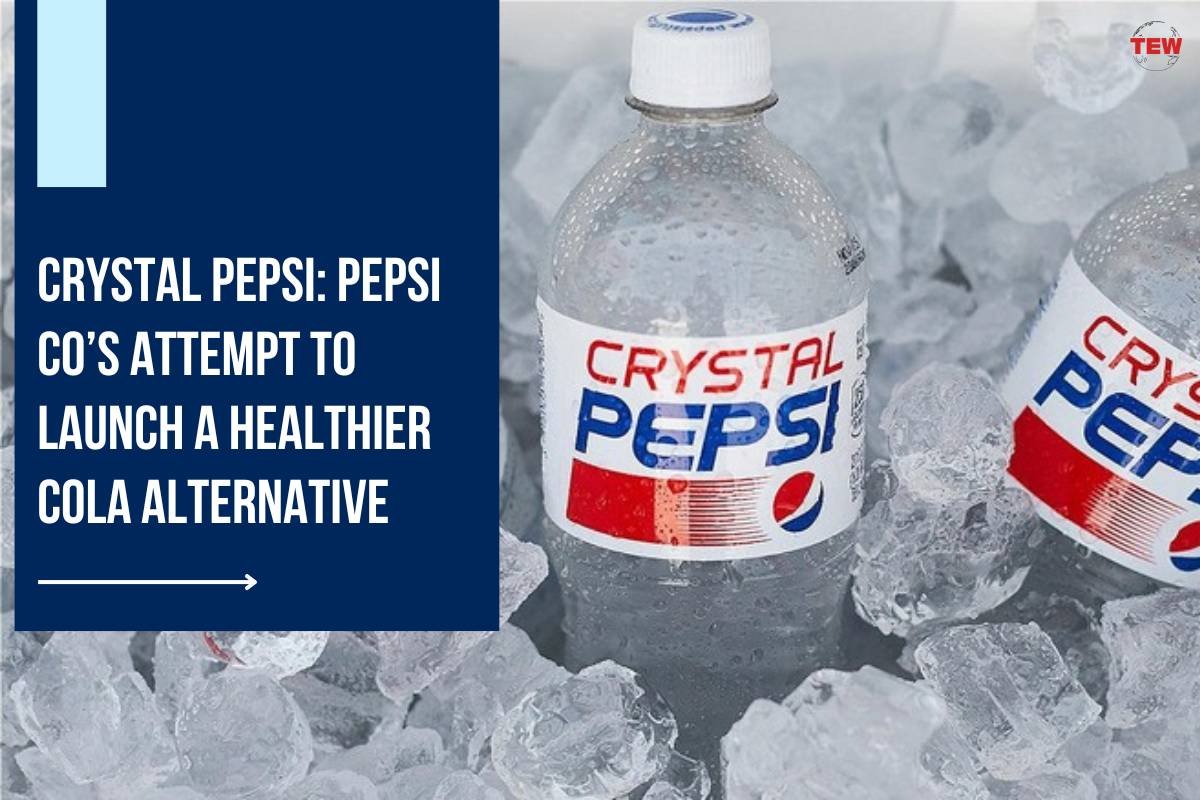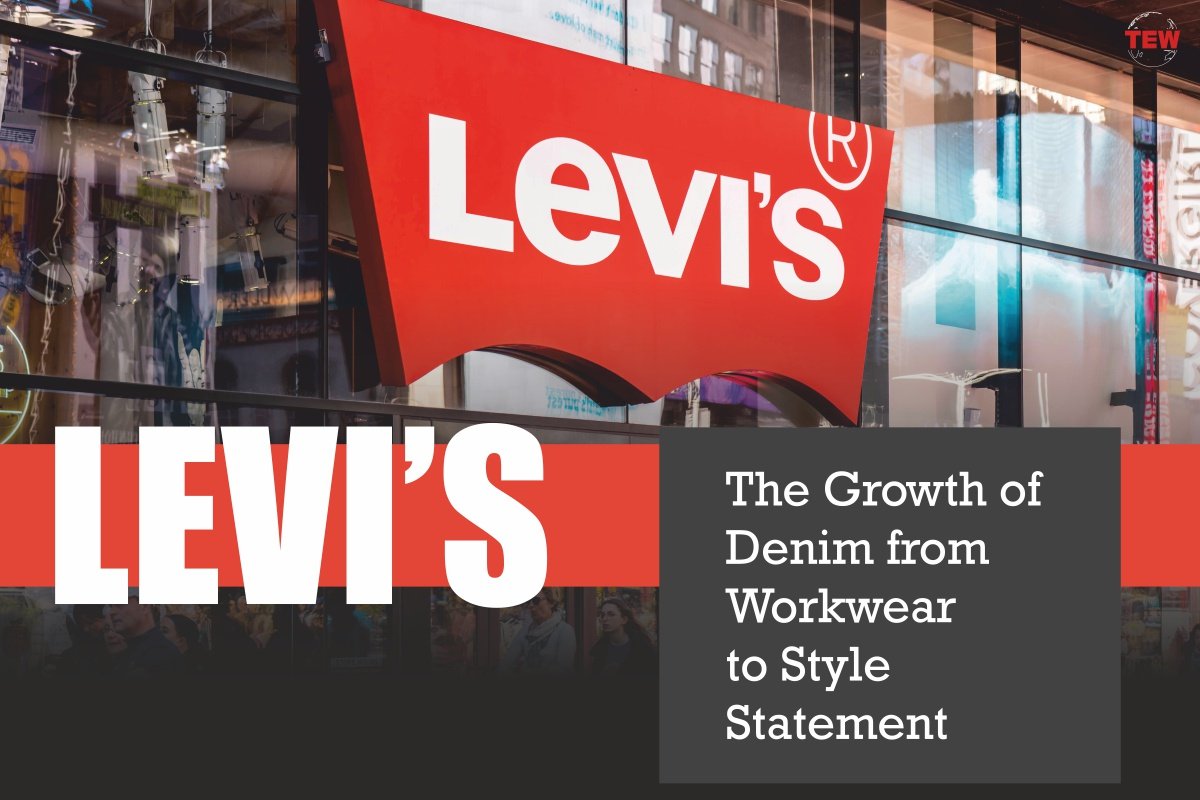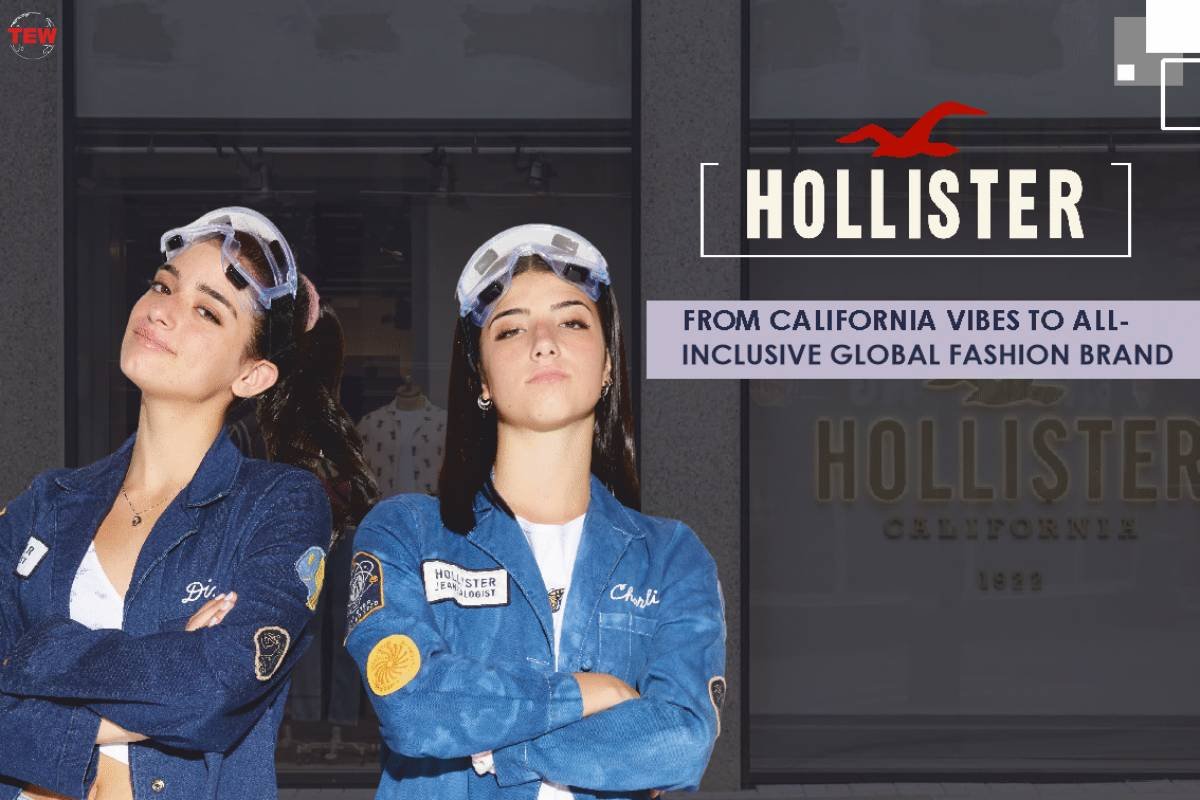We see a lot of healthier drink options in the market and go with the one we truly find good for our health. The beverage market is vast with healthy and unhealthy options. Pepsi co came up with Clear Pepsi in 1992 in the hope of meeting the customer demand for a better and healthier cola but failed in doing so. In this article we are going to learn about the product and why it failed.
Overview of the Product
Crystal Pepsi was a clear cola beverage produced by PepsiCo. It was introduced in 1992 and discontinued in 1994 due to low sales. The soda was later relaunched temporarily in 2017 to capitalize on 90s nostalgia. Crystal Pepsi was marketed as a new and unique product, different from regular Pepsi. It had a lighter and less sweet taste, was clear, caffeine-free, and made with all-natural flavors and no preservatives. The goal was to capture a portion of the retail soft drink market without harming the flagship Pepsi product.
| Launch year – 1992Discontinued year – 1994Company / Parent Company – PepsiCo |
What Was the Purpose Behind Launching Crystal Pepsi?
The purpose behind launching Crystal Pepsi was to offer consumers a unique and healthier alternative to traditional colas. In the early 1990s, there was a growing demand for products that were perceived as healthier and more natural. People were becoming increasingly conscious of their dietary choices and looking for options that aligned with their desire for a healthier lifestyle.
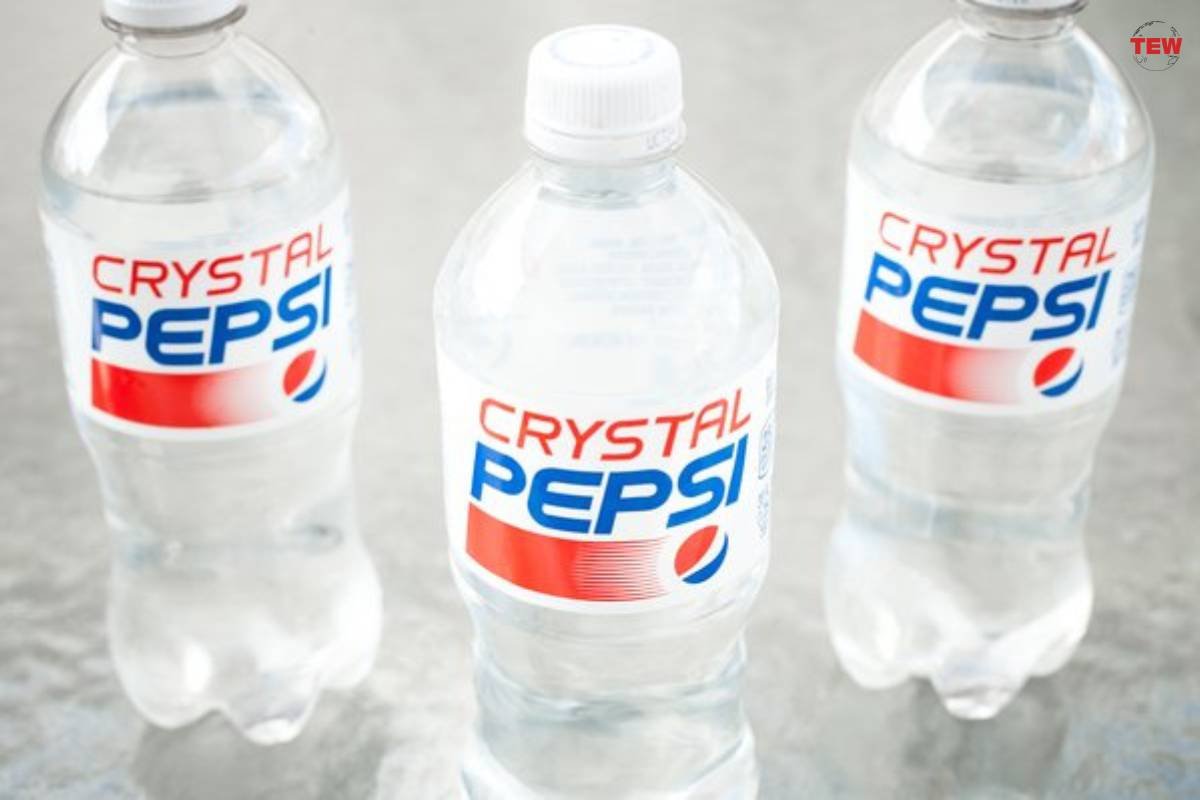
PepsiCo saw an opportunity to tap into this emerging trend and decided to introduce Crystal Pepsi. The goal was to provide a refreshing and guilt-free soda experience for consumers who wanted to enjoy cola without the excessive sweetness or artificial ingredients commonly found in traditional sodas.
Crystal Pepsi was different from regular colas in several ways. Firstly, it had a lighter and less sweet taste, making it a more appealing choice for those who preferred a milder flavor profile. Secondly, it was clear in appearance, which was a departure from the typical brown color of colas. This transparent look made it visually striking and sparked curiosity among consumers.
Crystal Pepsi was made with all-natural flavors and did not contain any preservatives. This appealed to health-conscious individuals who wanted to enjoy a soda without the guilt associated with consuming artificial ingredients.
By launching Crystal Pepsi, PepsiCo aimed to capture a portion of the market looking for a healthier soda option. The company wanted to offer consumers a refreshing and transparent cola that satisfied their desire for a more natural beverage choice.
Features of Crystal Pepsi
Below are the features of Crystal Pepsi.
- Clear Appearance: One of the standout features of Crystal Pepsi was its clear appearance. Unlike traditional brown-colored colas, Crystal Pepsi was transparent, almost like water. This unique visual aspect made it instantly eye-catching and sparked curiosity among consumers.
- Lighter and Less Sweet Taste: Crystal Pepsi offered a different taste experience compared to regular colas. It had a lighter and less sweet flavor profile. This made it appealing to those who preferred a milder taste and wanted to avoid the overwhelming sweetness often associated with traditional sodas.
- Caffeine-Free: Crystal Pepsi was caffeine-free, meaning it did not contain any caffeine. This feature made it an attractive choice for individuals who wanted to enjoy a cola without the stimulant effects of caffeine. It provided a refreshing option for those who preferred to limit their caffeine intake.
- All-Natural Flavors: Crystal Pepsi was made with all-natural flavors. This meant that the ingredients used to create the cola were derived from natural sources rather than artificial additives. The use of natural flavors appealed to consumers who sought products that aligned with their preference for more natural and wholesome ingredients.
- No Preservatives: Another feature of Crystal Pepsi was the absence of preservatives. Preservatives are commonly used in many food and beverage products to prolong shelf life. Crystal Pepsi, however, was made without any preservatives, appealing to those who sought products with fewer artificial additives.
What Did the Consumers Think About Crystal Pepsi?
Consumer reaction to Crystal Pepsi was a mix of curiosity, intrigue, and ultimately, disappointment. When Crystal Pepsi was introduced, consumers were intrigued by its unique and transparent appearance. Many people were curious about what a clear cola would taste like and were eager to try it. The novelty factor attracted a significant number of consumers who were excited about this new and different soda option.
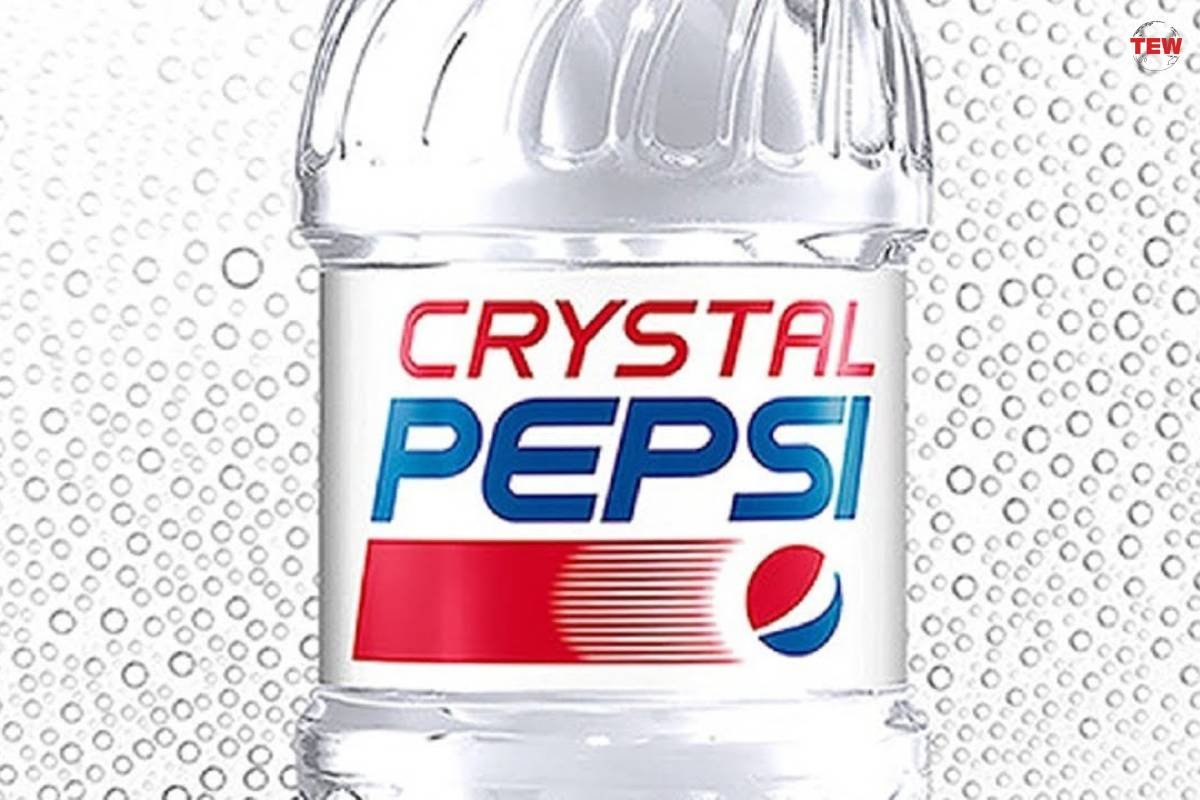
During the initial stages, Crystal Pepsi received positive feedback from consumers. Many appreciated its lighter and less sweet taste, which offered a refreshing alternative to the traditional colas available in the market. Some consumers also liked that it was caffeine-free, making it a suitable option for those who wanted to avoid stimulants.
However, as more people tried Crystal Pepsi, mixed reviews started to emerge. Some consumers felt that the taste did not live up to their expectations. They found the flavor to be somewhat lacking in comparison to regular Pepsi or other colas they were accustomed to. This led to disappointment and a reluctance to repurchase the product.
Crystal Pepsi also faced challenges in finding a clear target audience. The marketing strategy aimed to position it as a healthier alternative to traditional sodas. However, this positioning was not well-defined, resulting in confusion among consumers. They were still determining who the product was intended for and how it differed from regular Pepsi.
Why the Product Failed?
Crystal Pepsi faced several challenges that ultimately led to its failure in the market. Here are the reasons that led to product failure.
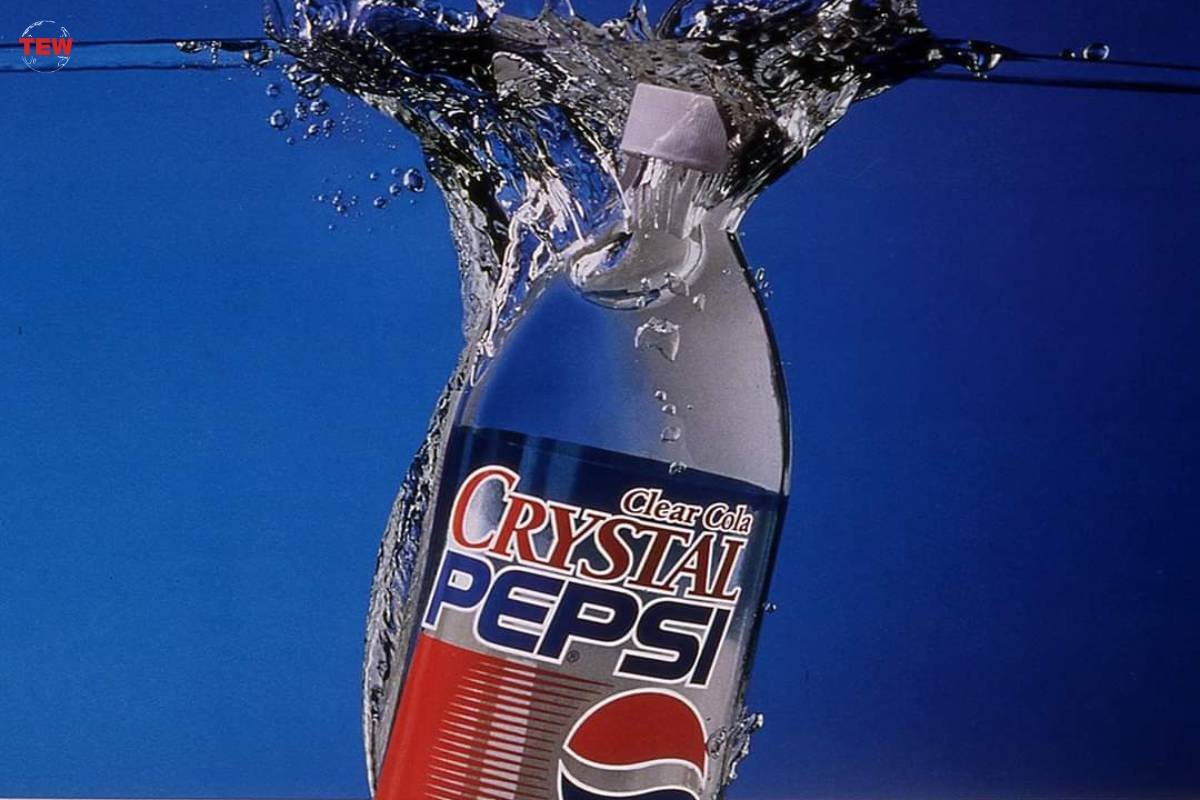
- One of the key reasons for Crystal Pepsi’s failure was the lack of a well-defined target audience. While the brand positioned itself as a healthier cola option, it failed to identify the specific group of consumers it aimed to attract. This lack of focus resulted in confusion among consumers, who were unsure if the product was intended for them.
- Crystal Pepsi faced direct competition from Tab Clear, a clear cola introduced by Coca-Cola. Tab Clear was strategically marketed under the Tab brand name, avoiding the potential negative backlash associated with Coca-Cola. This move created confusion in the market and diluted Crystal Pepsi’s unique selling proposition.
- Crystal Pepsi was marketed as having a taste similar to regular Pepsi. However, some consumers found the flavor lacking compared to their expectations. This discrepancy between the marketing promises and the actual taste of the product led to disappointment and a reluctance to repurchase.
- Crystal Pepsi’s marketing and positioning faced challenges. The brand tried to position itself as a healthier alternative, but this message was not effectively communicated to consumers. The marketing campaign lacked a clear and compelling message that resonated with the target audience, further contributing to the product’s failure.
- Crystal Pepsi had a shorter shelf life compared to traditional colas. This limited its availability and potential for widespread distribution. The shorter shelf life, combined with the lack of a clear target audience and effective marketing, hindered the product’s ability to gain traction in the market.
Key Marketing Takeaways
The failure of Crystal Pepsi provides valuable marketing insights and key takeaways for businesses.
- Clear and Defined Target Audience: Crystal Pepsi’s failure highlights the importance of identifying and understanding the target audience. It is crucial to have a clear understanding of who the product is intended for and to tailor the marketing efforts accordingly. By defining the target audience, businesses can develop focused marketing strategies that resonate with their intended customers.
- Consistent Brand Positioning: Crystal Pepsi’s positioning as a healthier cola option was not effectively communicated to consumers. Consistency in brand positioning is essential to build trust and create a distinct identity in the market. Marketers should ensure that the messaging aligns with the product’s attributes and deliver a consistent brand experience across all touchpoints.
- Manage Expectations: Crystal Pepsi faced challenges in meeting consumers’ taste expectations. Businesses should be mindful of setting accurate expectations through their marketing efforts. Transparent communication about the product’s features and taste can help manage consumer expectations and avoid disappointment.
- Effective Messaging: Crystal Pepsi’s marketing campaign lacked a clear and compelling message. Marketers should craft impactful messaging that conveys the product’s unique value proposition and resonates with the target audience. It is essential to communicate the product’s benefits concisely and persuasively to capture consumers’ attention.
- Adaptability and Agility: Crystal Pepsi faced competition from Tab Clear, which created confusion in the market. Businesses should be adaptable and agile to respond to market changes and competition effectively. Regular monitoring of the market landscape and competitor activities can help businesses make timely adjustments to their marketing strategies.
- Market Research and Testing: Conducting thorough market research and testing can provide valuable insights into consumer preferences and potential barriers to adoption. Businesses should invest in market research and conduct product testing to gather feedback and make informed decisions before launching a new product.
By applying these tactics in the marketing of your products, you may be able to reach out to your target audience, create a compelling strategy and make your business a success.

